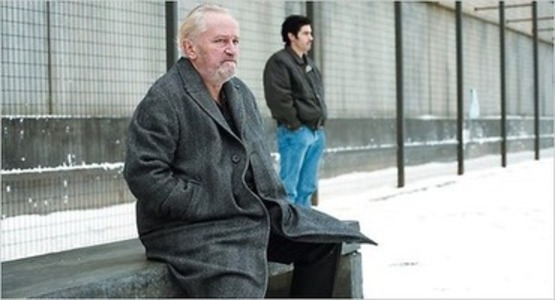Once, space had purpose before it had price. A bench in a park was a public good. A church basement was a refuge. A patch of land could host a shack, a garden, or a dream. But as cities grew and property law evolved under financial logic, every square foot became an asset. Not a part of the earth to be shared, but a unit of return to be made profitable.
The shift happened slowly. Land stopped being a place to live. It became a thing to own, trade, or use for profit. The result: the poor lost not just property but permission. Even to stand, sit, or sleep became tied to payment or policy. Once space carries a market value, keeping people out becomes justified as efficiency. Empty lots are fenced not because they are used, but because they must remain "protected capital." Public spaces shrink, privatized under claims of safety. The result: a society where existence itself has rent.
That shift carries mental weight. When space is always someone's property, the homeless are not merely without homes. They are trespassers everywhere. The act of resting, which once belonged to nature, becomes an offense. Over time, the moral order reverses. Instead of space serving life, life must justify its right to space.
This pattern goes beyond political ideology. Conservative frameworks stress personal responsibility and market solutions, yet markets created the system that produces homelessness. Progressive frameworks stress social safety nets and housing rights, yet government systems often exclude those most in need through eligibility rules and waiting lists. Libertarian frameworks stress freedom from government interference, yet offer no answer when private property rights eliminate all legal places for the poor to exist.
Homelessness persists across different political systems. Whether a city leans left or right, homeless populations remain visible. The difference lies not in whether homelessness exists, but in how communities respond. Conservative areas may stress law enforcement and camping bans. Progressive areas may stress shelter systems and housing programs. Yet both approaches often fail to address the basic problem: the complete exclusion of homeless individuals from basic infrastructure.
Reversing this pattern requires rethinking the purpose of land and infrastructure. Some spaces should belong to mercy, not profit. This is not a partisan position but a practical recognition of human needs. The body requires certain things regardless of political views: a place to eliminate waste, access to water, shelter from elements, and space to rest. When these needs are made criminal or tied to housing status, the result is predictable suffering and public health crises.
What makes practical solutions work across ideologies is their focus on real outcomes rather than theories. Does it reduce visible homelessness? Does it improve public health? Does it decrease emergency service costs? Does it restore dignity to individuals? These questions can be answered through measurement and observation, independent of political belief.
The key insight is that homelessness stems from infrastructure exclusion more than housing shortage alone. When individuals lack legal access to bathrooms, they improvise with predictable results for public health and environmental quality. When they lack legal places to sleep, they occupy spaces that create conflict with property owners and law enforcement. When they lack access to hygiene facilities, they cannot present themselves in ways that open doors to employment or services.
Providing dignified infrastructure access works as both a public health measure and a recognition of basic human rights. Open-access facilities with toilets, showers, and laundry reduce the visible impact of homelessness while offering connection points for health services, case management, and housing help. The cost of prevention through facility provision stays much lower than repeated law enforcement interactions, emergency room visits, and environmental cleanup operations.
Small-scale housing models like tiny home villages and shared homes have shown success across communities with different political leanings. These programs provide not only shelter but also security, privacy, and belonging that is often missing in larger institutional settings. They serve as a bridge between the street and permanent housing, offering a space where people can stabilize and begin to address other challenges in their lives.
The path forward faces practical obstacles. Getting funding, navigating zoning laws, and addressing community concerns are real hurdles. Success depends on strong local leadership, innovative partnerships, and a clear message. It requires groups of citizens, property owners, and local leaders willing to work together to overcome resistance and build something new.
This is not a call for one political side to win over another. It is a recognition that the current approach, regardless of political flavor, produces bad outcomes. People die on streets in both conservative and progressive cities. Public spaces degrade in both. Emergency services strain in both. The ideological debates continue while the basic problem persists.
The solution lies in acknowledging that certain human needs go beyond political categories. A person requires a toilet regardless of whether they vote Republican or Democrat. A person requires shelter from winter cold regardless of their views on taxation or regulation. A person requires access to water regardless of their position on free markets or social programs.
When communities focus on meeting these basic needs through practical infrastructure and housing options, they discover that many ideological objections dissolve. Property owners across the political spectrum support solutions that reduce visible encampments and public health hazards. Taxpayers across the spectrum support approaches that cost less than current emergency response systems. Citizens across the spectrum support measures that restore dignity to public spaces and human beings alike.
Homelessness goes beyond political ideologies because it is basically a human problem, not a political one. The solutions that work are those that recognize this reality and act accordingly.

